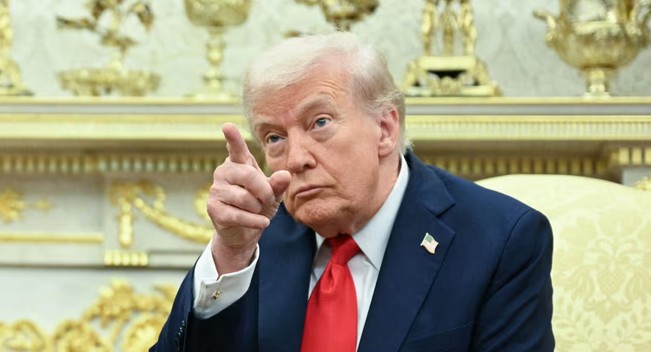President Trump to Visit Walter Reed for Annual Checkup and Meet with Troops
President Donald Trump is scheduled to visit Walter Reed National Military Medical Center on Friday for what White House Press Secretary Karoline Leavitt described as his routine yearly checkup. According to a statement released by the White House, the visit will also include a planned meeting and remarks with members of the military stationed at the facility.
This trip marks Trump’s second visit to Walter Reed this year for a medical examination. His last physical, which the White House previously referred to as his “annual physical examination,” took place on April 11. That visit included a full battery of standard health assessments, such as laboratory tests, a comprehensive physical examination, and a cognitive evaluation. Following the April appointment, the White House physician issued a memorandum confirming that the president was “fully fit” to carry out the responsibilities of the office and noted that Trump remained in “excellent health.”
However, Friday’s visit has raised questions, as it is unusual for a sitting president to undergo two annual physicals in the same year. The White House has not yet offered an explanation for the additional check-up, and a request for comment from CNN went unanswered at the time of reporting.
In addition to the check-up, Trump is expected to meet with troops and deliver remarks during his time at the medical center. The statement from Leavitt emphasized that this was a planned engagement and part of his continued outreach to the military community.
Following the visit to Walter Reed, President Trump is expected to return to the White House. According to the press secretary, he is also considering an international trip to the Middle East in the near future, although no formal announcement has been made regarding the timing or specific agenda of that trip.
Over the summer, despite his earlier clean bill of health, the president was diagnosed with chronic venous insufficiency (CVI), a relatively common circulatory condition. The diagnosis came after Trump reportedly experienced mild swelling in his lower legs, prompting further medical evaluation.
Chronic venous insufficiency occurs when the valves within the veins, particularly in the legs, are no longer functioning effectively, which causes blood to pool rather than return efficiently to the heart. This condition affects an estimated 150,000 Americans annually and is more frequently seen in older adults. Common symptoms include swelling in the ankles or lower legs, aching or heaviness in the limbs, cramping, the appearance of varicose veins, and in some cases, skin discoloration or discomfort.
While CVI is typically manageable, treatment depends on the severity of the condition. It can range from lifestyle modifications and compression therapy to medications or medical procedures in more advanced cases. Despite the diagnosis, the president’s medical team has not indicated that it currently interferes with his ability to perform his duties.
As always, presidential health remains a topic of public interest, and any additional updates from the White House or Trump’s medical team will likely be closely scrutinized as the former president continues to seek a return to office in the upcoming election season.



